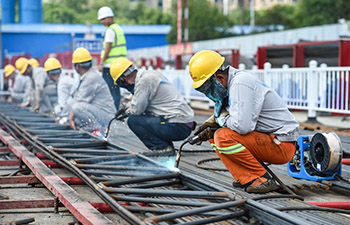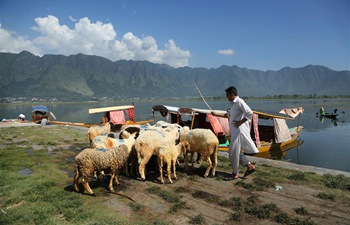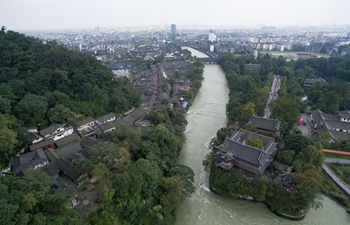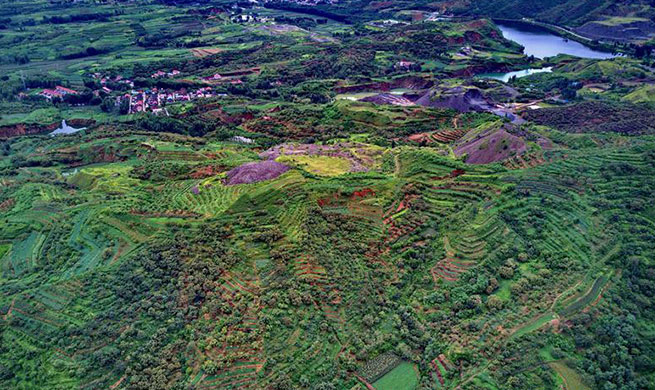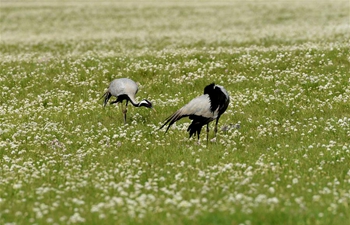KATHMANDU, Aug. 16 (Xinhua) -- In a bid to encourage people to get involved with agribusiness, one of the rural municipalities of Nepal has allocated a budget to provide an allowance for cows and buffaloes.
To the surprise of many, Sunapati Rural Municipality of the eastern district of Ramechhap has been providing allowances for cows and buffaloes that have given birth to calves recently.
Ramechhap is a district located in Province 3, some 130 km away from the capital city of Kathmandu, and was also one of the hardest-hit regions in the devastating earthquake that struck in 2015.
The rural municipality provided an allowance worth 3,000 rupees (26.69 U.S. dollars) for each cow and buffalo up to a herd of 30 in the fiscal year 2017-2018 and it plans to distribute the amount to 40 animals in the current fiscal year.
Dhawa Lama, chairman of Sunapati Rural Municipality, told Xinhua, "As people show less interest towards farming and animal husbandry these days, we launched this scheme to attract them. It has further encouraged unemployed youths to raise animals and generate an income."
The local government has already made the cash distribution for seven buffaloes in the past month after the farmers submitted evidence including photos and details of new-born calves.
Lama believes that the allowance will help farmers to provide necessary attention and care for the growth of the livestock which will lead them to become self-sufficient by selling dairy products like milk and curd.
Local farmer Dil Bahadur Shrestha, 55, is one of the beneficiaries of the scheme.
"I was only engaged in vegetable farming but this scheme attracted me so I started raising buffaloes a year ago. The allowance is useful to provide nutritious supplements to the animals," Shrestha told Xinhua.
According to Shrestha, his son who works in the capital city as a salesperson in a retail store, is also interested in getting involved in cattle farming in the next few months.
Besides the scheme for animals, the rural municipality has also planned to offer investments in the agriculture sector so that young people can be self-employed on their own land.
The move comes at a time when the brain-drain problem has been increasing at an alarming rate. Around 1,500 young and energetic people leave the country for the Gulf and Middle East everyday in search of attractive opportunities.
According to the Macroeconomic Report of the Central Bank of Nepal, 342,426 individuals freshly departed for foreign employment in the first 11 months (mid-August to mid-June) of last fiscal year.
Jagdish Mishra, Information Officer at District Administration Office Ramechhap, said the youngsters leaving for foreign education and employment is becoming more rampant in their district as well.
"Nearly 500 people approach us every month to make passports and more than 50 percent of them are young people leaving the country as migrant workers. The trend has increased in the past few months," Mishra told Xinhua.
In the previous Nepali month of Asadh, altogether 450 people had approached the office in regard to making passport. Mishra added, "It is not just the problem of a single district or municipality, rather it's a national problem."
Amid such circumstances, experts believe that the government should launch more programs nationwide to attract younger people to the agribusiness, which is the backbone of the national economy.
